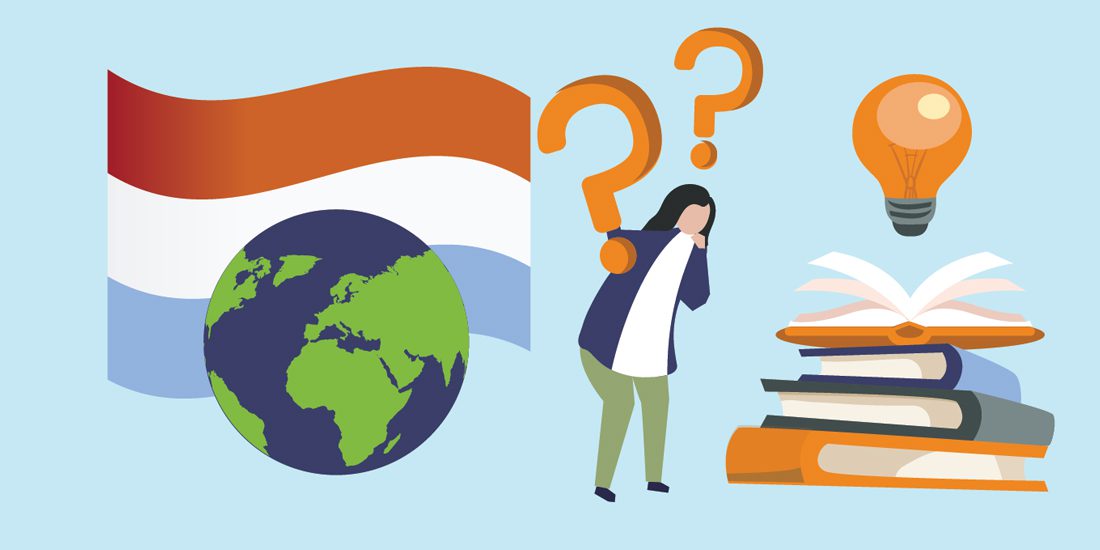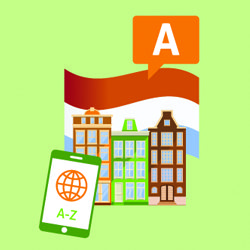
10 Common Mistakes When Translating English to Dutch
17 Jun 10 Common Mistakes When Translating English to Dutch
When translating from English to Dutch, professional translators often encounter various challenges, especially concerning cultural differences and common mistakes. Inexperienced translators may struggle with accurately capturing the tone of voice or maintaining the intended sentence structure. These errors can lead to confusing translations that fail to resonate with the target audience. Additionally, technical and medical translations require subject matter experts to ensure accuracy and precision. Utilizing translation memory tools can help streamline the translation process and reduce the risk of incorrect translations. However, even with these tools, it’s crucial to avoid common pitfalls and strive for high-quality translations that effectively convey the original message in the target language while respecting cultural nuances and linguistic intricacies
Translation quality can affect the way a student, partner company, or other relevant audience perceives your institution. Businesses dedicate enough time and money interpreting their marketing materials to reach their readers — so how does it end up with making several mistakes while translating text from English to Dutch translations? Here are ten mistakes to avoid when interpreting English text into Dutch!
When translating English to Dutch, even fluent speakers can make several common mistakes that affect the accuracy and quality of the translation. One typical mistake is the incorrect use of infinitive verbs and tense verbs, which can lead to confusion in the translated text. Perfect verbs, too, can be tricky and often result in errors that alter the intended meaning. Another common mistake involves vocabulary words; translators may choose words that seem correct in the original language but carry different connotations in the foreign language.
Pronunciation errors can also emerge, particularly with words that look similar in both languages but are pronounced differently. For literary translation, this becomes even more critical as nuances in the source language must be carefully preserved to maintain the text’s integrity. John Benjamins Publishing Company highlights these issues in their Review of Books, emphasizing that accurate translations require attention to detail and thorough grounds for review. Renowned translators like John Dryden have also noted that action attributable to bad judgment can result in translations that fail to convey the original message effectively.
Common pronunciation mistakes and typical vocabulary errors are often cited in resources like The New York Review of Books and John Benjamins’ publications. These mistakes are the biggest pitfalls for translators and are frequently discussed in translation studies. Accurate and careful handling of language nuances is essential to avoid common translation mistakes and produce high-quality, reliable translations.
1. Literal Translation from English to Dutch
Literal translation from English to Dutch can often result in mistakes, especially when relying solely on machine translators. While these tools have improved, they still struggle to grasp the nuances of language like human translators can. For instance, an English speaker might overlook sentence construction differences between the two languages, leading to grammatical errors in the Dutch translation. Common types of mistakes include errors in spelling and the misuse of false cognates, which can lead to confusion for the reader. Furthermore, translating formal registers requires an excellent command of both languages to ensure accuracy and maintain the appropriate level of formality in the Dutch text. Therefore, it’s crucial to approach translation with caution and prioritize the expertise of human translators over solely relying on automated tools to produce reliable results.
This is a way of letting mistakes get into your translation. Even though words may be correctly translated, it’s important to know that variant languages have different grammar, sentence creation, and subject-object balance. The key is paying care of syntactical differences, the language of words, and style between dialects.
Literal translation from English to Dutch can often lead to significant issues in conveying the intended meaning of the original text. This form of translation, which involves directly converting words and phrases from the source language to the target language without considering context, often results in awkward or incorrect sentences. For instance, idiomatic expressions and cultural nuances may be lost, leading to confusion or misinterpretation.
A literal approach might translate “It’s raining cats and dogs” directly, which in Dutch would not make sense and could be a source of amusement or bewilderment. Additionally, grammatical structures differ between English and Dutch, such as verb placement and article use, making literal translations problematic. Effective translation requires an understanding of the cultural and linguistic context to ensure that the target language accurately reflects the meaning and tone of the original text.
2. Failing to Translate Message Behind Language
Failing to accurately translate the message behind a language often results in common grammar mistakes and grammatical errors that can distort the intended meaning. One typical mistake in the English language, especially for those translating from a foreign language, is the incorrect use of auxiliary verbs and infinitive verbs, leading to incomplete sentences. For instance, a common error might involve using a singular verb incorrectly, which can be particularly jarring in English translations.
Such mistakes were noted by Mark Twain, who highlighted the pitfalls of indirect speech and direct speech in translation. In modern translation, experts like Mark Polizzotti emphasize the importance of preserving the original language’s intent and nuance to avoid vocabulary word mistakes and the biggest mistake of all: losing the message behind the words. Historical contexts, such as those seen in 18th and 19th-century texts, further complicate translations. As seen in reviews like The New York Review, understanding the subtleties of the source material, much like understanding the position and role of a football player in a game, is crucial for conveying the true meaning behind the language.
Missing the message behind an interpretation can have significant drawbacks. While the interpretation can be technically accurate, the nature of the message can fully replace the sense of a word. In some situations, a minor error can increase tensions between nations inducing them the edge of war. So be careful while translating text and intended message of the text from one language to another.

3. Considering It is Easy to Translate
Some Dutch idioms are confusing so interpreting them may sound awkward, although if it is in English or other languages. You must be prepared if you intend to increase your reach business wise. Translations into Dutch are challenging doing because Dutch is a hard and challenging language. It highlights a lot of strange characters like spelling and borrowing of words that are sometimes not anticipated.
4. Not Proofreading Content by A Native Dutch Speaker
The simplest way to clean your English to Dutch transformed text to find minor mistakes and to avoid awkward words is to have a regional Dutch speaker revise it. Allowing time in your work for an ultimate proofreading point is a good thing despite interpretation, but when you’re driving text out into space in a language you don’t understand, it’s helpful to be sure it’s not missing a point.
5. Translating Text Without Taking Care of Style or Tone
Translating text without taking care of style or tone can severely impact the effectiveness and integrity of the communication. Style and tone are critical elements that convey the author’s attitude, emotions, and personality, which are integral to the original message. Ignoring these aspects can lead to translations that feel flat, impersonal, or even misleading. For example, a marketing message intended to be vibrant and engaging might come across as dull and uninviting if the translator fails to capture the original style.
Similarly, a formal document could lose its authority and professionalism without the appropriate tone. In literature, nuances of style and tone are essential to the reader’s experience and understanding of the text. Modern translation practices, as advocated by experts like Mark Polizzotti, stress the importance of preserving these elements to maintain the original text’s impact and authenticity. Failure to do so can result in a translation that, while technically accurate, fails to resonate with the target audience and does not convey the intended emotional or stylistic nuances of the source material.
Imagine how tricky interpreting an English composition would be, and you’re thinking to find how complex and nuanced keeping tone can be. You might be thinking about the types of words you choose. How it reads can eventually be as high as what is being read.
This error isn’t restricted to advertising text or reading activities, either. A complete blog can be misunderstood if the style or tone is not correct. Say a text is reflecting about a climate movement is transformed with an exact, reliable tone. Suddenly, the reader might have the spot to be much terrible than it is, and predict a storm is expected.
6. Not Producing a Glossary or TM (Translation Memory) Database
Be easy by producing a glossary of translated words as you go—something you can do in interpretation work. Have you noted down terms that you usually use, messages that come out, or slogans that were a little difficult to get right? That way, you’re doing work simpler for other professionals, ensuring additional readability, and reducing room for mistake.

7. Considering Languages Do Not Change or Grow
Considering languages as static entities that do not change or grow is a significant misconception. Languages are dynamic and constantly evolving, influenced by cultural shifts, technological advancements, and interactions with other languages. This linguistic evolution is evident in the addition of new vocabulary, changes in grammar and syntax, and shifts in usage and meaning. For example, the English language today is vastly different from its form in the 18th or 19th century, incorporating countless words and phrases from other languages and adapting to contemporary communication needs.
Mark Twain’s works, for instance, reflect the vernacular of his time, which might seem archaic to modern readers. Failing to recognize the fluid nature of languages can lead to outdated translations that do not resonate with contemporary audiences. Modern translation practices must account for this ongoing change, ensuring that translations are not only accurate but also relevant and relatable to today’s speakers. Acknowledging that languages grow and adapt is essential for effective communication across different eras and cultural contexts.
New words are attached in vocabulary every year and not only in the English or Dutch language. Translators are trained students of the languages they study, staying up to date on new terms, trends, and evolving of language.
Words and phrases evolve. New terms are invented, and their applications change. Many translators are pressed for time. They have a lot of work to complete and deadlines to meet, which leads to translator mistakes, as they are left with minimal time to track the latest developments.
The best way to avoid such mistakes is to keep yourself updated with the most recent trends. And, if you can’t do this, then make sure that you cross-check whenever you come across new words.
8. Assuming Just Because You Know a Language, That You Can Translate into It
Know two languages doesn’t qualify someone to interpret between the two, as opposed to what you might think. The interpretation is an art and needs to learn creativity and lots of knowledge to do good.
For some types of translations such as medical and scientific interpretation, highly technical content, or other organized industries — understanding of a language is half of the demand. You need to find someone good in that trade or profession. For every translation, you might need more cultural experience to mix with that audience.
9. Numbers are Not Just Numbers
Pay attention to stats, figures, and any interpretation of statistical information like times, drug doses, currency, dates, and the metric system. It might seem like numbers are just numbers no matter who’s reading them, but their formats can differ from nation to nation, and the language surrounding them might affect their understanding.
10. Ignoring “Untranslatable” Words or Local Common Proverbs
This is a general issue when using slang, common proverbs, or snappy taglines in language. They work in English, but fall flat in Dutch. Your best bet is to choose a professional interpretation company and a native Dutch speaker to make sure your meaning carries over to your language. Contact professional for good and accurate results!
I hope you will find this article about ten common mistakes when interpreting English to Dutch helpful!

